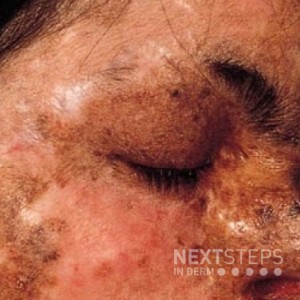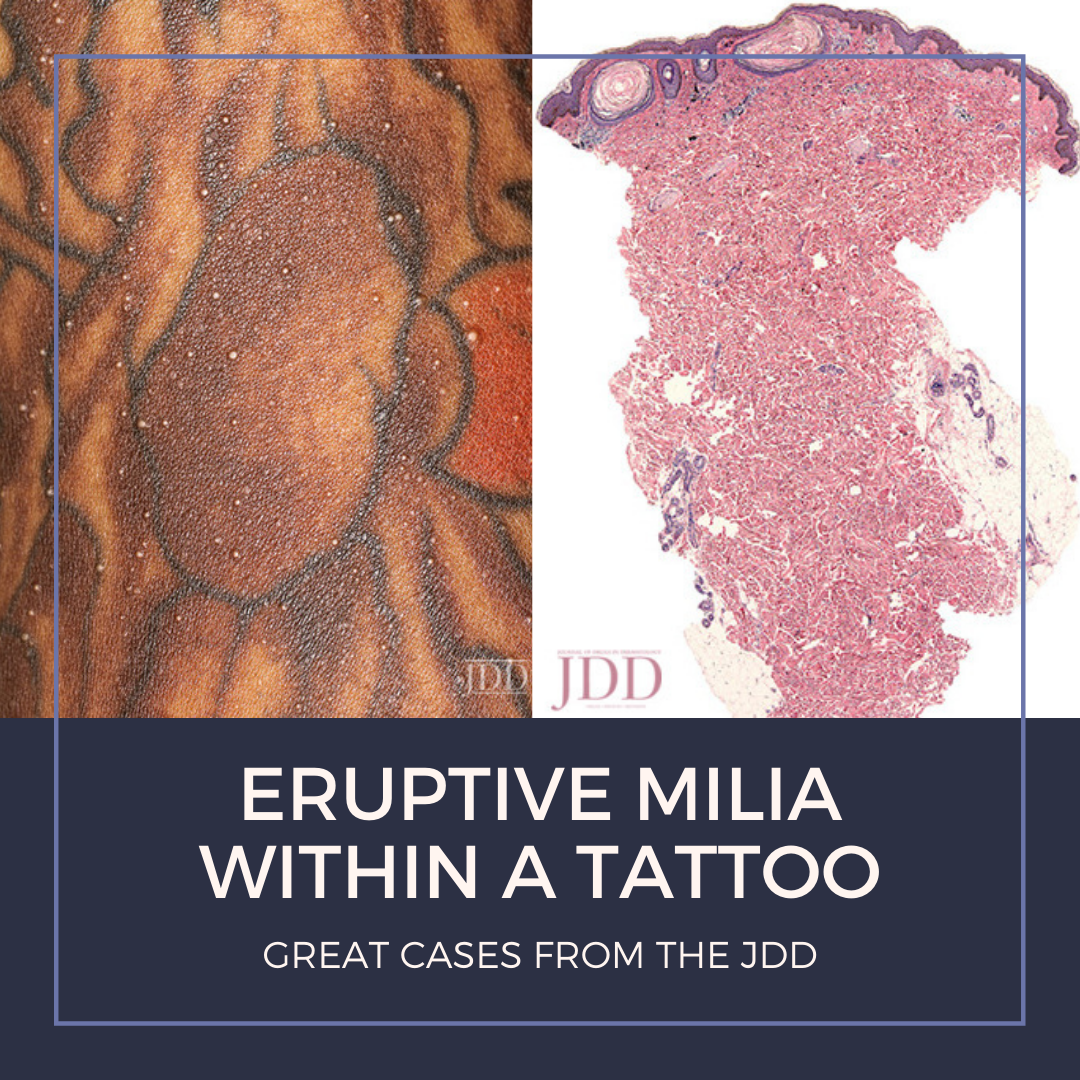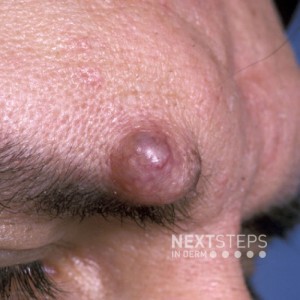5-Fluorouracil Therapeutic Cheat Sheet
 Actinic keratoses represent the most common dermatologic diagnosis in patients older than 45 years old in the United States and account for 5.2 million visits annually.1 Cutaneous field cancerization represents areas with a high burden of both clinical and subclinical actinic damage. Cryotherapy can often be combined with topical chemotherapy for a synergistic approach. We continue our series, The …
Actinic keratoses represent the most common dermatologic diagnosis in patients older than 45 years old in the United States and account for 5.2 million visits annually.1 Cutaneous field cancerization represents areas with a high burden of both clinical and subclinical actinic damage. Cryotherapy can often be combined with topical chemotherapy for a synergistic approach. We continue our series, The …
 Actinic keratoses represent the most common dermatologic diagnosis in patients older than 45 years old in the United States and account for 5.2 million visits annually.1 Cutaneous field cancerization represents areas with a high burden of both clinical and subclinical actinic damage. Cryotherapy can often be combined with topical chemotherapy for a synergistic approach. We continue our series, The …
Actinic keratoses represent the most common dermatologic diagnosis in patients older than 45 years old in the United States and account for 5.2 million visits annually.1 Cutaneous field cancerization represents areas with a high burden of both clinical and subclinical actinic damage. Cryotherapy can often be combined with topical chemotherapy for a synergistic approach. We continue our series, The … 

 Which subtype of this disease is most common in the United States?
A. C
B. A
C. B
D. D
E. E
To find out the correct answer and read the explanation, click here.
Brought to you by our brand partner Derm In-Review. A product of SanovaWorks.
…
Which subtype of this disease is most common in the United States?
A. C
B. A
C. B
D. D
E. E
To find out the correct answer and read the explanation, click here.
Brought to you by our brand partner Derm In-Review. A product of SanovaWorks.
…  The following is a summary of one of the many Q&A sessions held during the 2020 Skin of Color Virtual Update. During this particular session, questions were moderated by SOCU Co-Chair Dr. Andrew Alexis and answered by Drs. Ginette Okoye and Candrice Heath. The audience posed important questions and the faculty offered insightful answers regarding atopic dermatitis, hidradenitis suppurativa, h …
The following is a summary of one of the many Q&A sessions held during the 2020 Skin of Color Virtual Update. During this particular session, questions were moderated by SOCU Co-Chair Dr. Andrew Alexis and answered by Drs. Ginette Okoye and Candrice Heath. The audience posed important questions and the faculty offered insightful answers regarding atopic dermatitis, hidradenitis suppurativa, h …  Introduction
The most frequently reported tattoo-related dermatoses, according to a study of 234 tattooed patients, are allergic,1infectious,2,3 and granulomatous4,5 reactions occurring in 2.1% of this population.6 Less common reactions are lichenoid,7photoallergic,8 pseudolymphomatous,9 discoid lupus erythematosus,10 incidental skin neoplasm,11 and koebnerization of psoriasis.12,13Milia within t …
Introduction
The most frequently reported tattoo-related dermatoses, according to a study of 234 tattooed patients, are allergic,1infectious,2,3 and granulomatous4,5 reactions occurring in 2.1% of this population.6 Less common reactions are lichenoid,7photoallergic,8 pseudolymphomatous,9 discoid lupus erythematosus,10 incidental skin neoplasm,11 and koebnerization of psoriasis.12,13Milia within t …  The pathology of this lesion demonstrates reticulate strands of the epidermis with clefting between the strands and the stroma. What is the diagnosis?
A. Eccrine syringofibroadenoma
B. Fibroepithelioma of Pinkus
C. Squamous cell carcinoma
D. Reticulate seborrheic keratosis
E. Tumor of the follicular infundibulim
To find out the correct answer and read the explanation, click her …
The pathology of this lesion demonstrates reticulate strands of the epidermis with clefting between the strands and the stroma. What is the diagnosis?
A. Eccrine syringofibroadenoma
B. Fibroepithelioma of Pinkus
C. Squamous cell carcinoma
D. Reticulate seborrheic keratosis
E. Tumor of the follicular infundibulim
To find out the correct answer and read the explanation, click her …